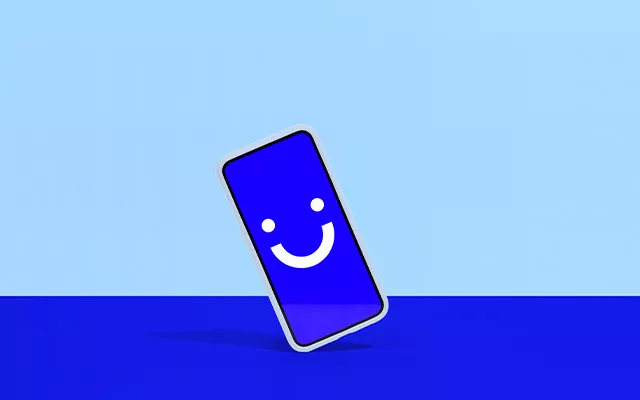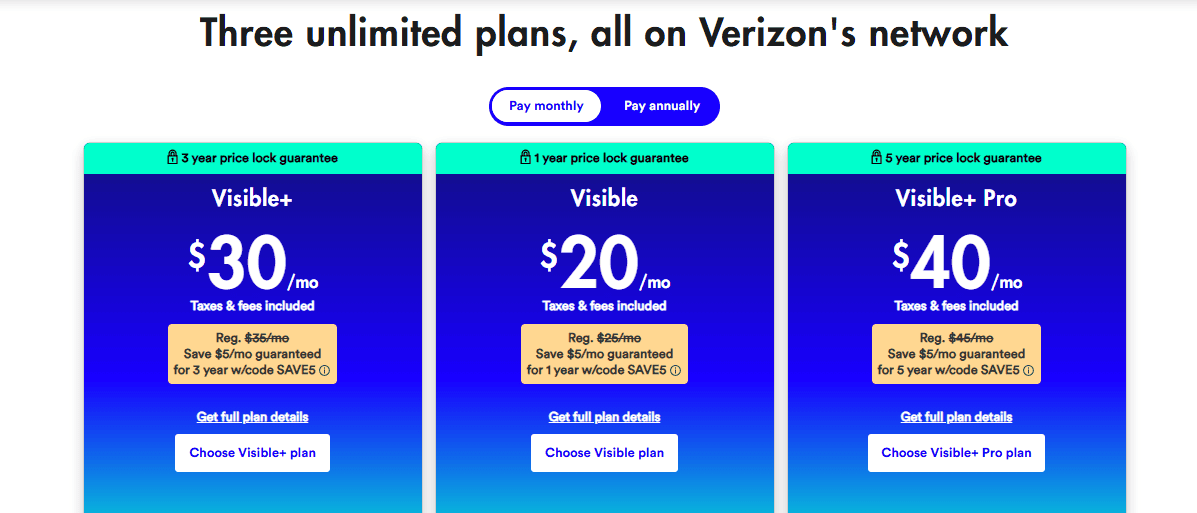Last Updated on August 11, 2025 by Ewen Finser
When you think of the words “wireless carrier,” AT&T may be the first name that comes into your head.
That’s understandable, as the company has been providing telephony services for over 140 years.
Still, I’ve recently discovered a new contender in this space, which provides excellent coverage and features, as well as being kind to your wallet.
Visible by Verizon has now become one of the main players in the industry by leveraging its network infrastructure to provide great coverage at affordable prices.
Whether you’re a professional like me who just needs a reliable Internet connection for remote work, or a family trying to save on wireless bills, you need to choose the cellular plan that best matches your needs.
That’s why it’s important to understand both what Visible by Verizon and AT&T have to offer.
Try Visible for FREE with their 15-day offer before you switch. No commitment or credit card needed. Terms apply.
Key Takeaways: The Bottom Line Up Front
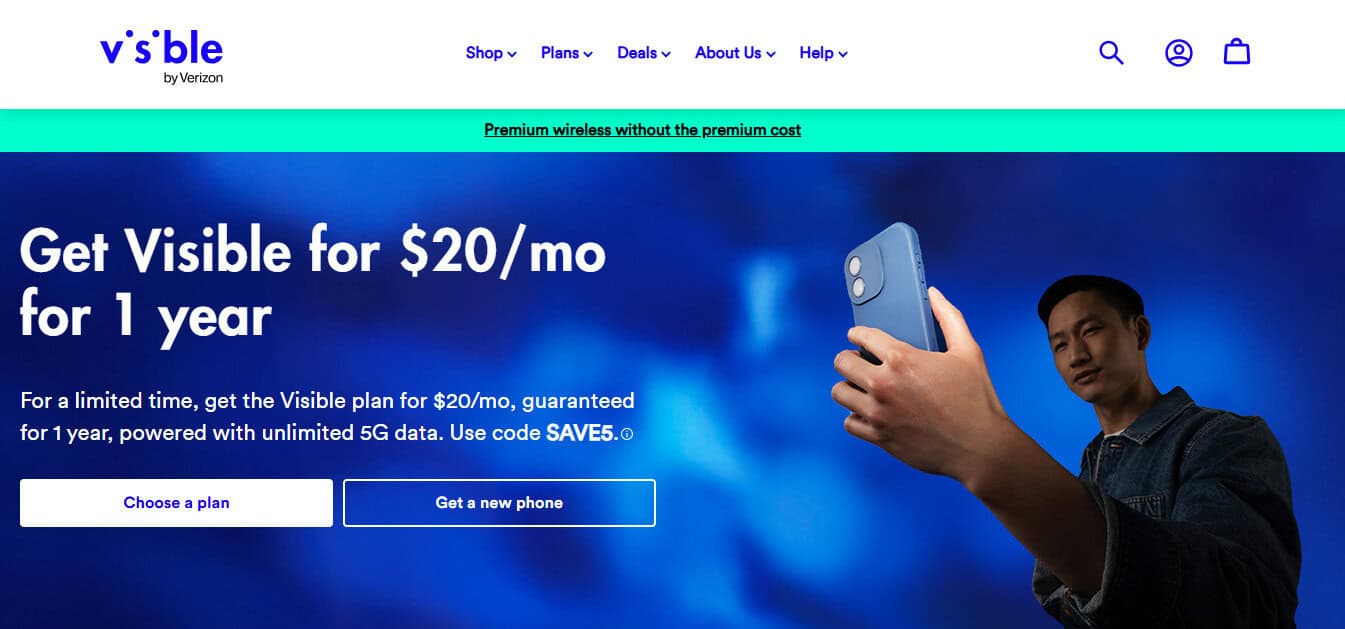
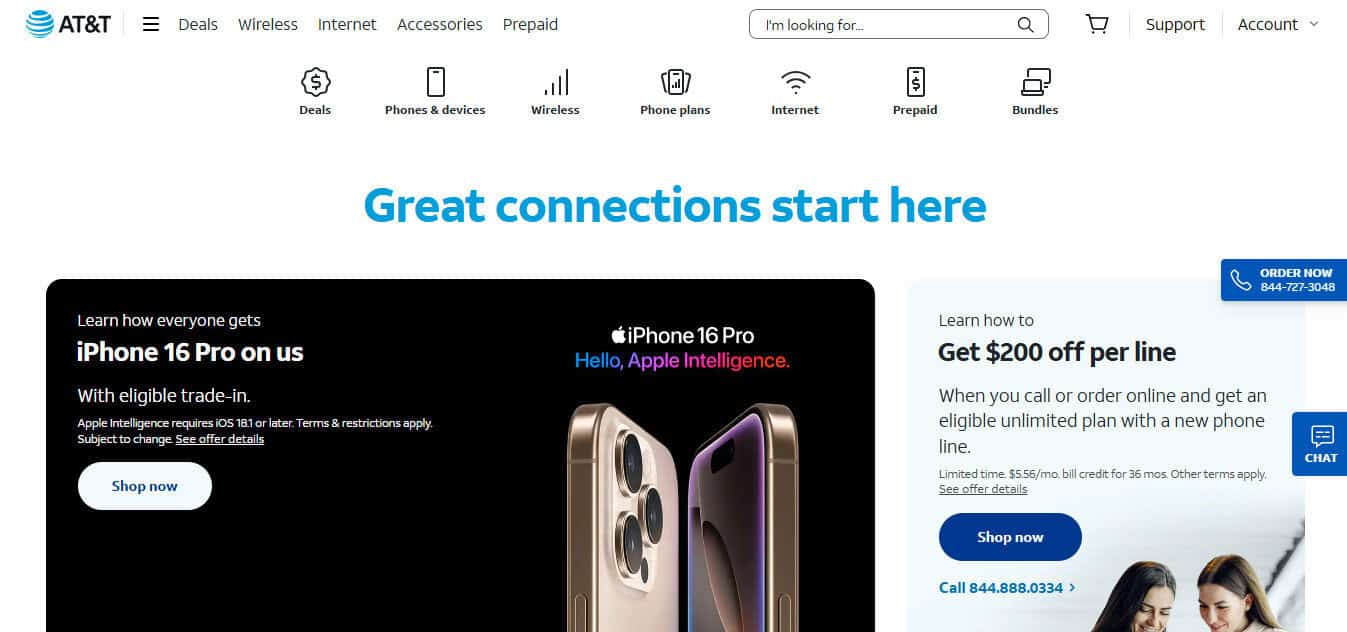
If you’re on a budget, as I am, then Visible by Verizon is a clear winner. Overall, its plans offer better value than those of AT&T. Verizon’s pricing is also more transparent.
You can also sign up for one of the higher-tier plans to benefit from unlimited data on Verizon’s 5G Ultra Wideband network, which offers some pretty impressive speeds.
Based on my experience testing network coverage and performance, Visible’s performance has been consistently reliable.
This is why I have hitched my wagon to Visible by Verizon’s star, as it’s exactly what I’m looking for in a wireless carrier: unlimited data, transparent pricing, and excellent network performance.
Still, the right choice for you will depend on your needs, budget, and preferences.
At a Glance
Visible by Verizon
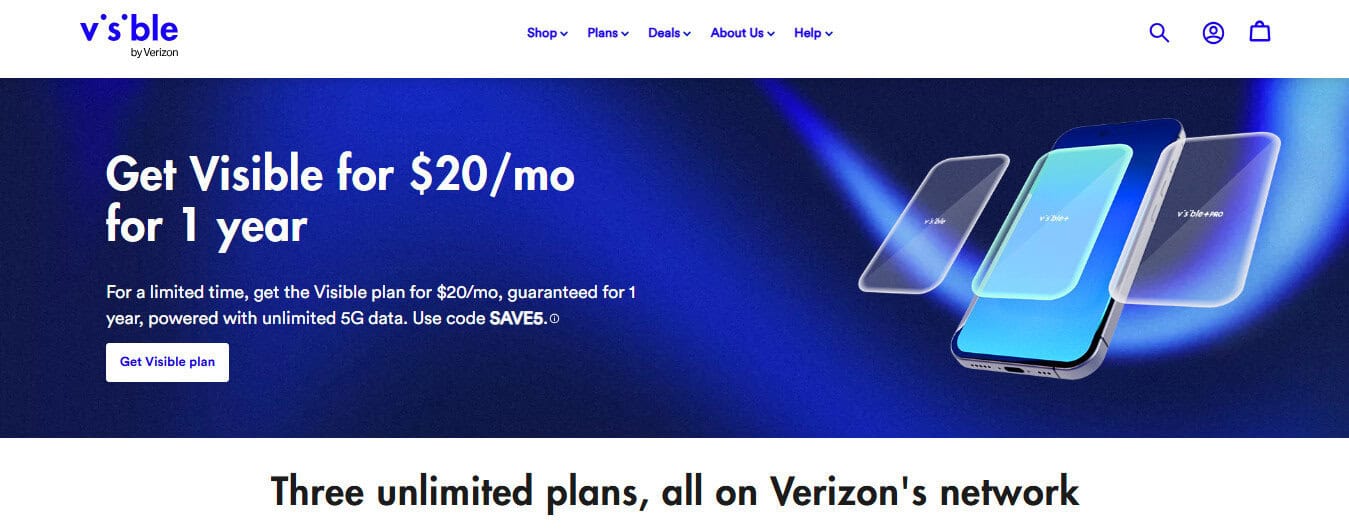
One of the first things I noticed when visiting Verizon’s site is that it has a refreshingly simple approach.
There are three straightforward plans that clearly lay out exactly what you get for your money.
The listed features are also exactly what I like to see as a busy digital nomad. They include reliable 4G/5G/LTE (its coverage extends to 99% of the US population).
The features also include unlimited mobile hotspot data, talk, and text.
You can sign up for a plan straight away or order from Verizon’s selection of cell phones. Of all the wireless platforms I’ve reviewed, I found this setup process the fastest. I had a SIM installed in my iPhone in under 8 minutes.
AT&T Wireless Plans
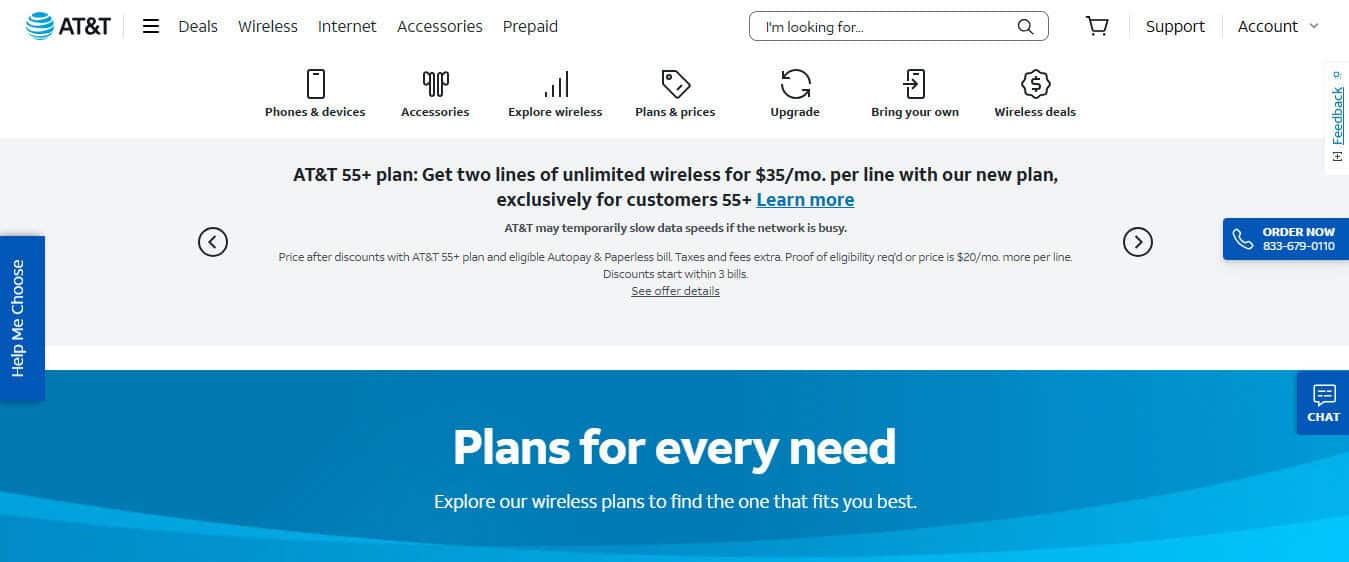
My Dad always said there’s no school like the old school, and this is definitely AT&T’s approach.
If you visit their pricing page as I did, you’ll see that the platform also lists three ‘unlimited’ wireless plans.
These also offer unlimited talk and text, though the high-speed data offerings will depend on your specific plan.
I found that AT&T’s differing feature sets to be a little overwhelming, especially as the listed per-line prices assume you’re signing up for four lines at once. Prices can also change if you’re in the military, over 55, or are a first responder.
Still, presuming you can navigate the different price points and plan components, AT&T’s strength lies in its dominant market position.
It has a very well-established network infrastructure and extremely comprehensive service offerings, even if this comes at a premium.
Visible by Verizon vs AT&T Cell: Plan Pricing Breakdown
Visible
As I said, Verizon offers three Visible Wireless plans, which clearly list the prices and features:
The lowest cost ‘Visible’ plan costs $20 per month, or you can save $25 by paying $275 for the whole year. If you do pay monthly, the plan has a 1-year price lock guarantee, i.e., your monthly subscription won’t be increased during that time.
This plan includes:
- Unlimited data, talk & text on Verizon’s 5G & 4G LTE networks.
- Unlimited use of your phone’s hotspot feature.
- Unlimited talk and text to Mexico and Canada.
The ‘Visible+’ Wireless plan costs $30 per month, or you can save $45 by paying $375 for the entire year. Verizon offers a 3-year price lock guarantee for this plan.
It includes all of the perks of the lowest-tier wireless plan, plus:
- Unlimited ‘premium’ data on Verizon’s fastest 5G Ultra Wideband and 4G LTE networks.
- Unlimited use of your phone’s hotspot feature at double the speed of the lowest-priced ‘Visible’ plan.
- Unlimited talk, text, and data while roaming in Mexico & Canada
The ‘Visible+ Pro’ plan costs $40 per month, or you can save yourself $90 by paying $475 for a full year in one go.
It includes all the features of the ‘Visible’ and ‘Visible+’ plans as well as:
- Free Smartwatch service.
- Unlimited use of your phone’s hotspot feature at triple the speed of the lowest-priced ‘Visible’ plan.
- Unlimited data while roaming in Mexico & Canada (as well as talk and text).
- Calling to 85+ countries & unlimited texting to 200+
Try Visible for FREE with their 15-day offer before you switch. No commitment or credit card needed. Terms apply.
When I signed up for a Visible Wireless Plan, the company was running a promotion to save $5 on monthly prices using the code ‘SAVE5’. The above prices reflect this, because at the time I’m writing this review, the promotion is still running.
Verizon prides itself on not having any hidden fees. The listed prices include all taxes and fees.
There are only two scenarios in which you might have to pay extra. One is if you have a smart watch. The ‘Visible’ and ‘Visible+’ plans charge an extra $10 per month to connect your device.
On the plus side, this means if you’re a smartwatch owner deciding between the ‘Visible+’ and the ‘Visible+Pro’ plan, you might as well sign up for the more expensive one. The ‘Pro’ plan costs $40 but includes smartwatch integration and the best Internet speeds, costing you the same amount you’d have paid for ‘Visible +’ with a smartwatch bolt-on ($30 + $10).
AT&T
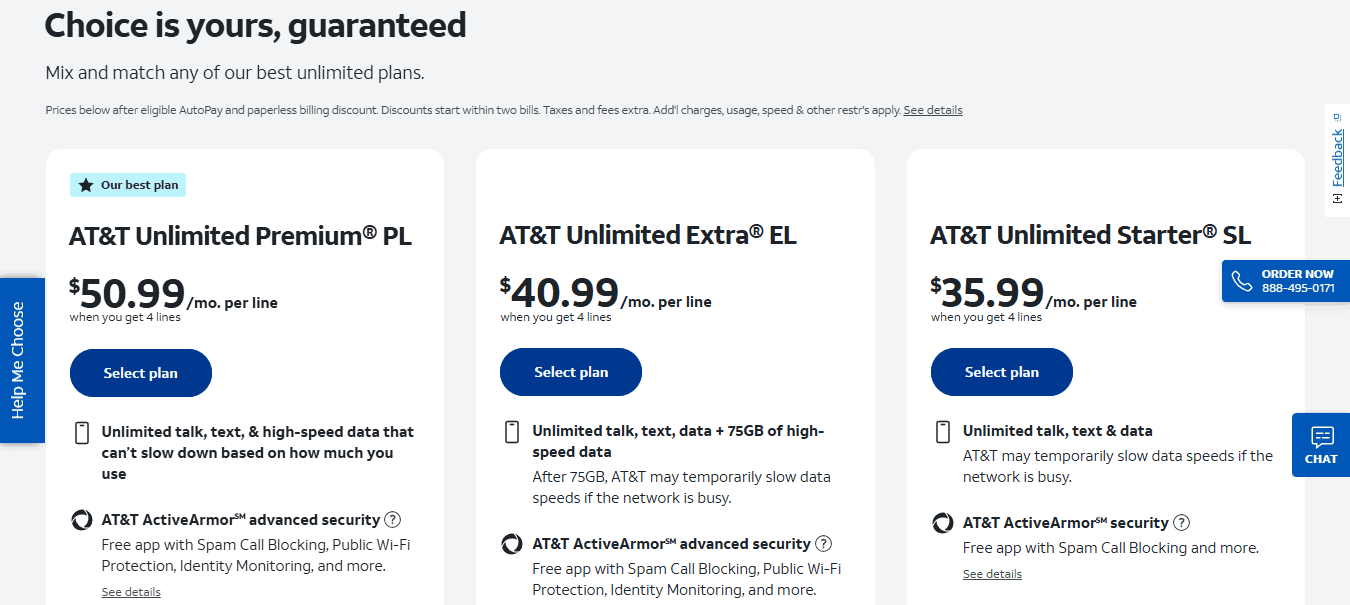
I’ve found it can be difficult to draw a direct comparison between AT&T’s wireless plans and its competitors, as it offers so many.
To ensure we’re not comparing apples with oranges, I’ve focused on the carrier’s current ‘unlimited’ plans.
The lowest-cost of these is the ‘AT&T Unlimited Starter SL’ plan. This can cost as little as $35.99 per month for individuals if you sign up for four lines. However, for the purposes of fair comparison, I’ve focused on the cost to one person, which in this case would be $65.99.
This includes:
- Unlimited talk, text, and data.
- 5 GB of hotspot data.
- ‘Standard Streaming’
I was confused when I read through these offerings at first, as I wasn’t sure if data was unlimited or you only received 5 GB via the hotspot.
Upon reading the fine print, I learned that you get 5GB of hotspot data, after which your download speeds are slowed to a maximum of 128 Kbps. As a tech journalist, I can tell you this would make it unsuitable for anything beyond very basic web browsing, like reading the news.
AT&T also gives itself the right to ‘temporarily slow data speeds’ if the network is busy. It seems to also do this deliberately in the case of ‘standard streaming’ via its ‘Video Management Feature’.
As far as I could tell, this is designed to minimize data usage by reducing your streaming video quality to SD (standard definition). This means if you try to play a higher-resolution video, e.g., 4K, it almost certainly won’t render in the kind of quality you need.
Hopefully, by now, you’ll see why I had so much trouble fully understanding exactly what you get for your money when you sign up with AT&T!
That said, there’s also an ‘AT&T Unlimited Extra EL’ plan for $75.99 per month.
It includes the unlimited talk and text coverage of the ‘Starter’ plan, as well as 75 GB of ‘high speed’ data, after which AT&T reduces your speeds if the network is busy.
You also get 30 GB of hotspot data per month, though once you run through this allowance, your Internet speed will be slowed down to a trickle as with the ‘Starter’ plan. The ‘Extra’ plan also offers ‘standard’ streaming.
The website claims its most popular ‘unlimited’ plan is the ‘AT&T Unlimited Premium PL’ plan, which comes to $85.99 per month.
This plan includes unlimited talk and text, as with the other two plans, as well as unlimited ‘high speed’ data. In plain English, this means AT&T won’t slow down your connection, no matter how much Internet data you use.
You also benefit from ‘4K UHD streaming’ or in other words, AT&T won’t deliberately try to reduce video quality when you’re watching content.
As I mentioned in the ‘At a glance’ section above, there are discounts available, e.g, first responders get 25% off line prices.
However, the site also says that these discounts don’t kick in until two billing cycles are complete. It also states that the listed fees don’t include taxes or fees, and that additional charges will apply. I’d say this makes it almost impossible to work out how much you’ll pay until you’ve been with AT&T for a few months.
Visible by Verizon vs AT&T Cell: International Coverage
Visible
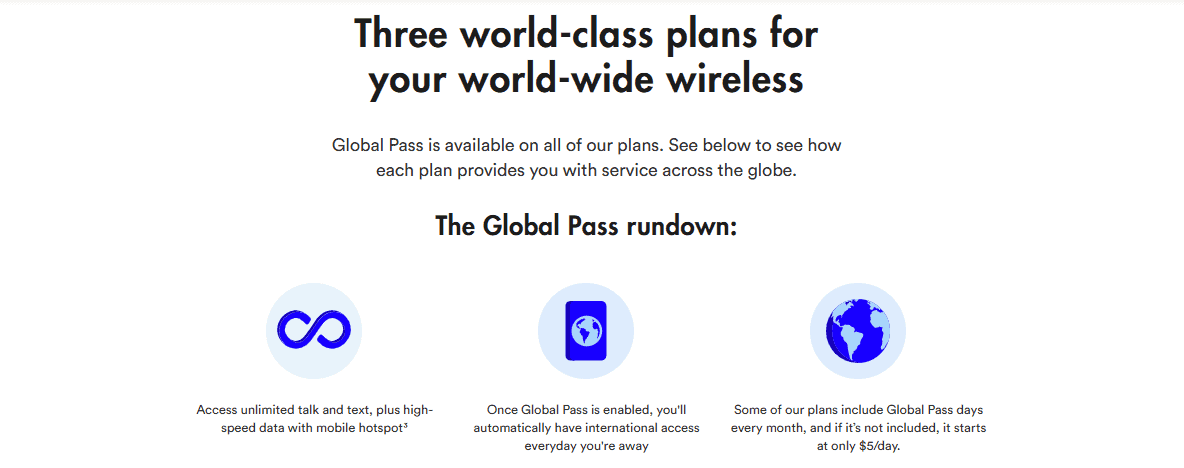
Visible offers a ‘Global Pass’. This gives you unlimited talk and text, as well as 2 GB of data (with or without a mobile hotspot) in over 140 countries.
If you’re signed up for a regular ‘Visible’ plan, then this costs $5 per day for Mexico, Canada, Puerto Rico, and the U.S. Virgin Islands. Other countries cost $10 per day.
Visible+ plans come with a Global pass for the North American countries/territories I mentioned above, plus one day of Global Pass per month.
If you choose the ‘Visible+ Pro’ plan as I did, then you’ll get up to two free days of Global Pass per month. You can also bank up to twelve unused days at any one time.
After you’ve run through your free Global Pass allowance, you have to pay $10 per day, just as with the ‘Visible’ plan.
AT&T

All AT&T ‘unlimited’ plans include unlimited talk, text, and data in the U.S, Canada, and Mexico.
The ‘Premium’ plan extends this coverage to 20 Latin American countries. If you’re using another plan or are outside these countries, you’ll need to buy an AT&T ‘International Day Pass’. This costs $12 per day on land, or $20 daily for both land and sea.
Visible by Verizon vs AT&T Cell: Security
As a cybersecurity journalist, this subject is very close to my heart. Choosing the wrong wireless carrier can lead to your number being leaked to marketers, putting you at risk of spam calls and identity fraud.
That’s why both Verizon and AT&T do what they can to keep you safe:
Visible
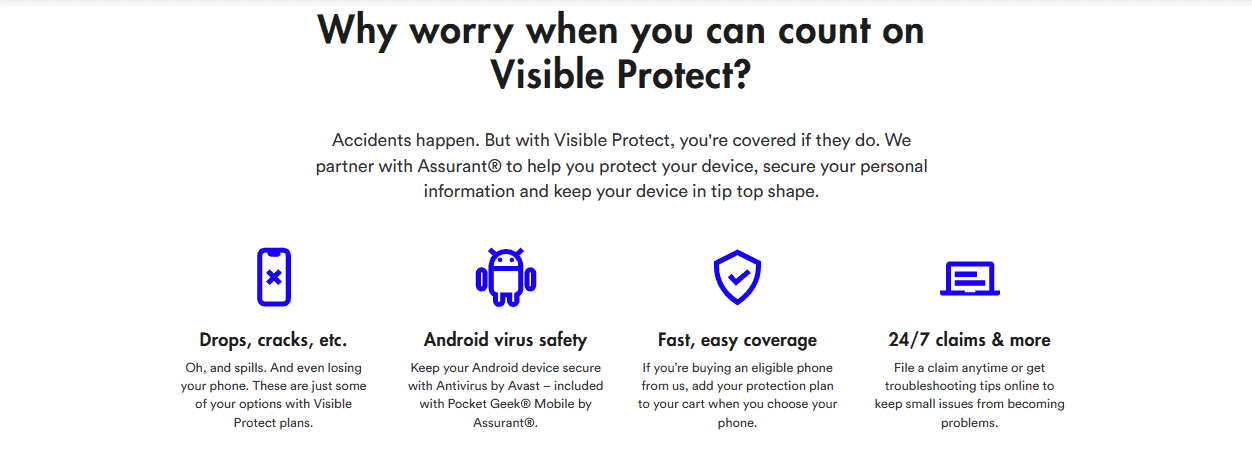
From browsing the plan pricing page, I see that all Visible plans can block ‘high-risk and spam robocalls’ automatically.
If you install the Verizon app or log in to the website, you can change these settings, e.g., to block ‘medium risk’ calls too. I was pleased to see there’s also an option for ‘all spam calls’, though I don’t know why this isn’t enabled by default.
AT&T
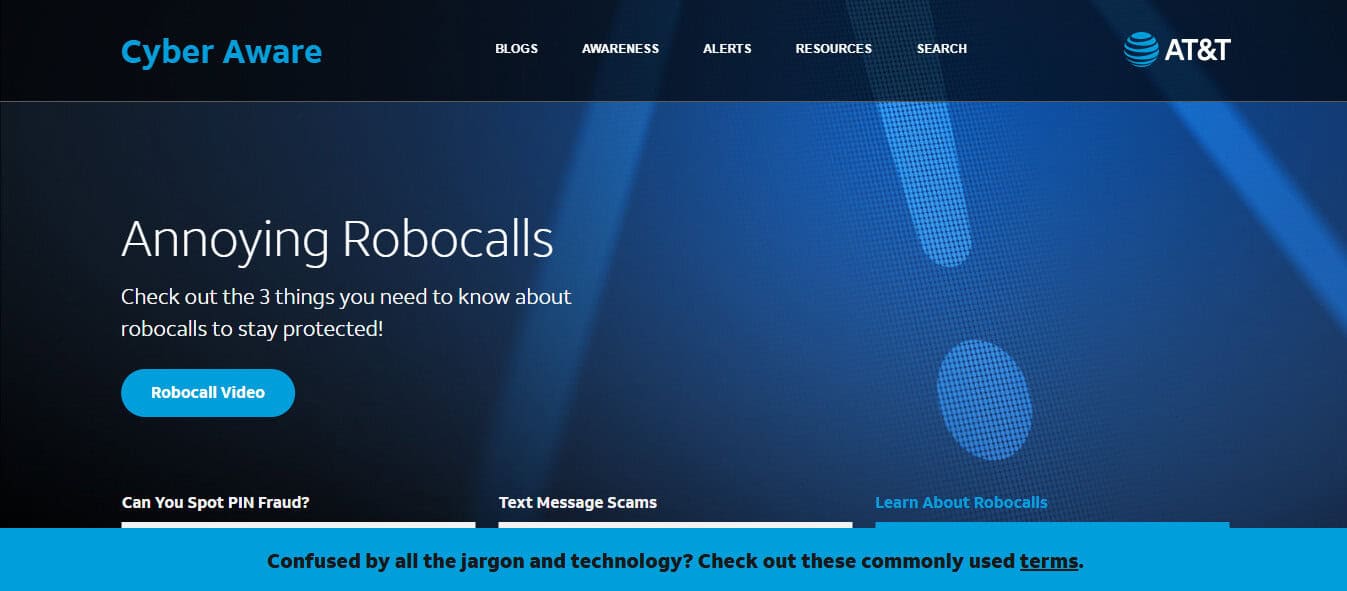
All ‘Unlimited’ plans come with AT&T ActiveArmor. This provides comprehensive protection that not only includes spam calls but also dubious texts. Users can even create a personal blocklist of unwanted numbers.
This does involve installing a specific app on your device, but you will benefit from its premium ‘Advanced’ features free of charge, like a VPN connection to protect your data on public WiFi.
Making the Smart Choice
Try Visible for FREE with their 15-day offer before you switch. No commitment or credit card needed. Terms apply.
After extensive testing, I stand by my original assessment that Visible Wireless plans are the better choice for most consumers.
Verizon has an extremely reliable network and also offers transparent pricing, listing all the essential features you’re likely to need in a cellular plan.
Admittedly, if you’re planning on going on an international cruise anytime soon, then you’ll probably benefit from AT&T’s global coverage. However, I feel the platform lets itself down with nebulous pricing.
Speaking as a professional who needs reliable Internet for their work, I also wouldn’t feel comfortable trusting AT&T, given its very low monthly limits on mobile hotspot data after which your Internet speeds slow to a crawl.
Visible plans not only have unlimited hotspot data for all plans but also offer much better value for money than AT&T. Given that AT&T wireless plan can potentially cost you much more for relatively limited features, I can’t see any justification in using it over Visible.


